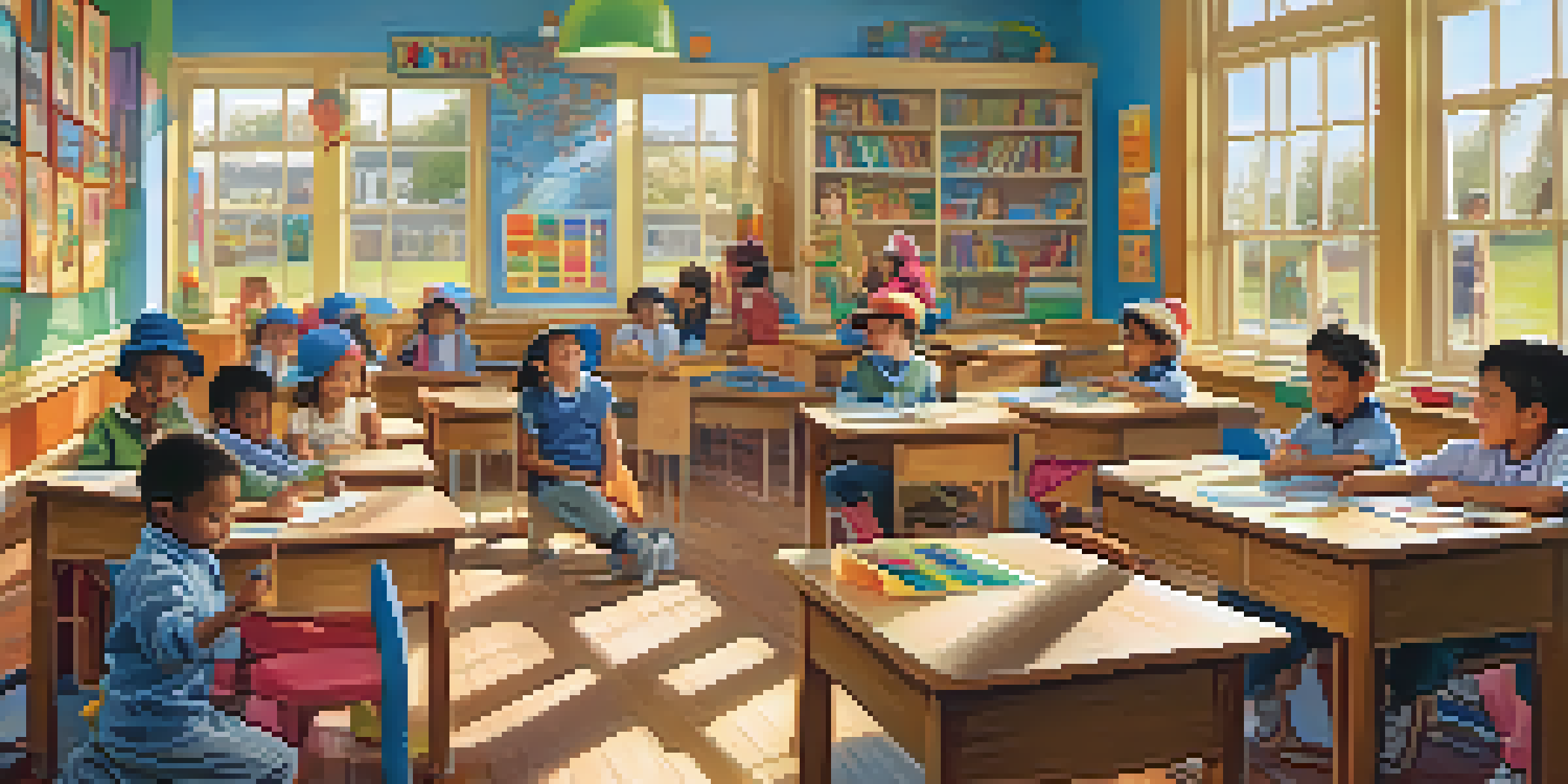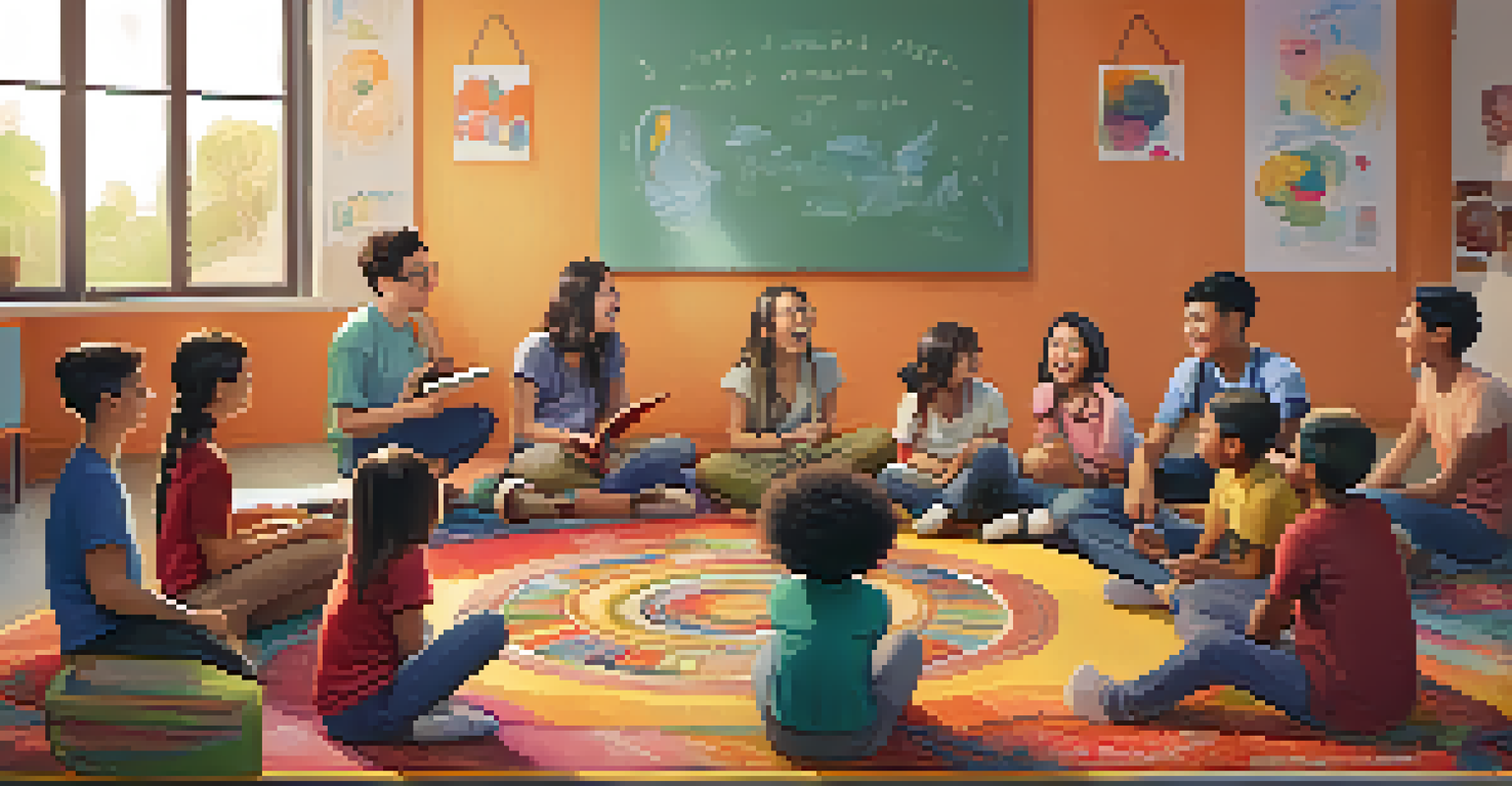The Role of Humor in Learning Through Play

Understanding Learning Through Play and Humor
Learning through play is a fundamental approach where fun and creativity drive education. When humor is integrated, it creates an environment that encourages exploration and curiosity. This playful atmosphere not only makes learning enjoyable but also fosters deeper connections to the material.
Humor is just another defense against the universe.
Children naturally gravitate towards humor; it draws them in and keeps their attention. When laughter is involved, it reduces anxiety and makes new concepts feel less intimidating. This is particularly important in educational settings where fear of failure can stifle creativity.
By intertwining humor with play, educators can create memorable experiences that resonate long after the lesson ends. For instance, a teacher who uses funny characters or silly songs can help students retain information more effectively. The combination of laughter and learning cultivates a sense of joy that is essential for growth.
The Psychological Benefits of Humor in Learning
Humor has a profound impact on the brain, triggering the release of endorphins that promote feelings of happiness and relaxation. When students are relaxed, their cognitive functions improve, allowing them to absorb information more readily. This psychological boost can be the key to overcoming learning obstacles.

Moreover, humor can enhance social connections among peers. Shared laughter fosters camaraderie, encouraging teamwork and collaboration during group activities. It creates a safe space where students feel comfortable expressing themselves and taking risks, which is essential for effective learning.
Play and Humor Enhance Learning
Integrating humor into play creates an engaging educational environment that fosters exploration and deeper connections to the material.
Incorporating humor into lessons can also help students develop critical thinking skills. When they are encouraged to think outside the box and find humor in unexpected places, they learn to approach problems from different angles. This playful exploration nurtures creativity, a vital skill for lifelong learning.
Examples of Humor in Educational Play
There are countless ways to integrate humor into learning through play. For example, role-playing games where students take on funny personas can make complex subjects like history or science more relatable. This technique not only engages students but also allows them to explore different perspectives.
Laughter is timeless, imagination has no age, and dreams are forever.
Storytelling is another powerful tool; educators can weave humorous narratives that captivate students' imaginations. A funny twist in a story can help reinforce key concepts while keeping the students entertained. This approach makes the learning experience dynamic and unforgettable.
Additionally, incorporating educational games with humorous elements can enhance the learning experience. Think of board games that involve silly challenges related to math or vocabulary. These games encourage friendly competition while reinforcing essential skills in a light-hearted manner.
Challenges of Using Humor in Education
While humor can be a powerful educational tool, it’s essential to strike the right balance. Not every joke will resonate with every student, and what is funny to one may not be to another. This variation in humor can lead to misunderstandings or alienation, making it crucial for educators to gauge their audience.
Moreover, humor must be age-appropriate and sensitive to diverse backgrounds. Jokes that rely on cultural references may exclude some students, undermining the inclusive environment that educators strive to create. Therefore, it’s important to choose humor that fosters unity rather than division.
Humor Boosts Emotional Resilience
Humor helps students express their feelings and cope with challenges, promoting resilience and a positive classroom atmosphere.
Lastly, over-reliance on humor can sometimes detract from the educational content. While laughter is important, it’s essential that the primary learning objectives remain intact. Striking a balance between fun and education ensures that students not only enjoy the process but also gain valuable knowledge.
How Humor Facilitates Emotional Learning
Humor plays a vital role in emotional learning by helping students express and manage their feelings. When humor is present, students feel more at ease discussing their emotions, making it easier to tackle difficult subjects. This emotional connection is key to fostering resilience in learners.
In playful environments, humor can also be a coping mechanism. When faced with challenges, students who can laugh at themselves or the situation are more likely to persist. This resilience not only enriches their learning experience but also prepares them for future obstacles.
Additionally, humor encourages empathy among students. When they share a laugh, they connect on a human level, fostering understanding and compassion. This emotional bond enhances the overall classroom atmosphere, making it a safe space for learning and growth.
The Role of Educators in Using Humor Effectively
Educators play a pivotal role in harnessing the power of humor in learning. By modeling a light-hearted approach, they can set the tone for a playful and engaging classroom environment. This encourages students to embrace humor as a vital part of their learning journey.
It's important for educators to be adaptable and responsive to their students' reactions. Observing how students respond to humor enables teachers to refine their approaches and create a more inclusive atmosphere. This adaptability fosters a sense of community, where laughter is a shared experience.
Educators Are Key to Humor's Use
Teachers play a crucial role in effectively using humor by being adaptable and responsive to their students' reactions, fostering an inclusive environment.
Furthermore, educators can seek feedback from students about what types of humor resonate with them. By involving students in this dialogue, teachers can create a more personalized learning experience. This collaboration not only enhances the educational process but also strengthens the teacher-student relationship.
Conclusion: Embracing Humor for Lifelong Learning
In conclusion, humor is a powerful catalyst for learning through play. It enhances engagement, fosters emotional connections, and nurtures creativity—all essential components of effective education. By embracing humor, educators can create an environment where students thrive.
As we move towards more playful and interactive educational methods, it’s crucial to remember the role humor plays in this process. It’s not just about making learning fun; it’s about creating meaningful experiences that resonate with students. When learning is enjoyable, students are more likely to retain information and develop a love for knowledge.

Ultimately, the integration of humor in learning prepares students for a world that values creativity and resilience. By nurturing these skills through playful learning, we equip students to face future challenges with a smile and a sense of adventure.